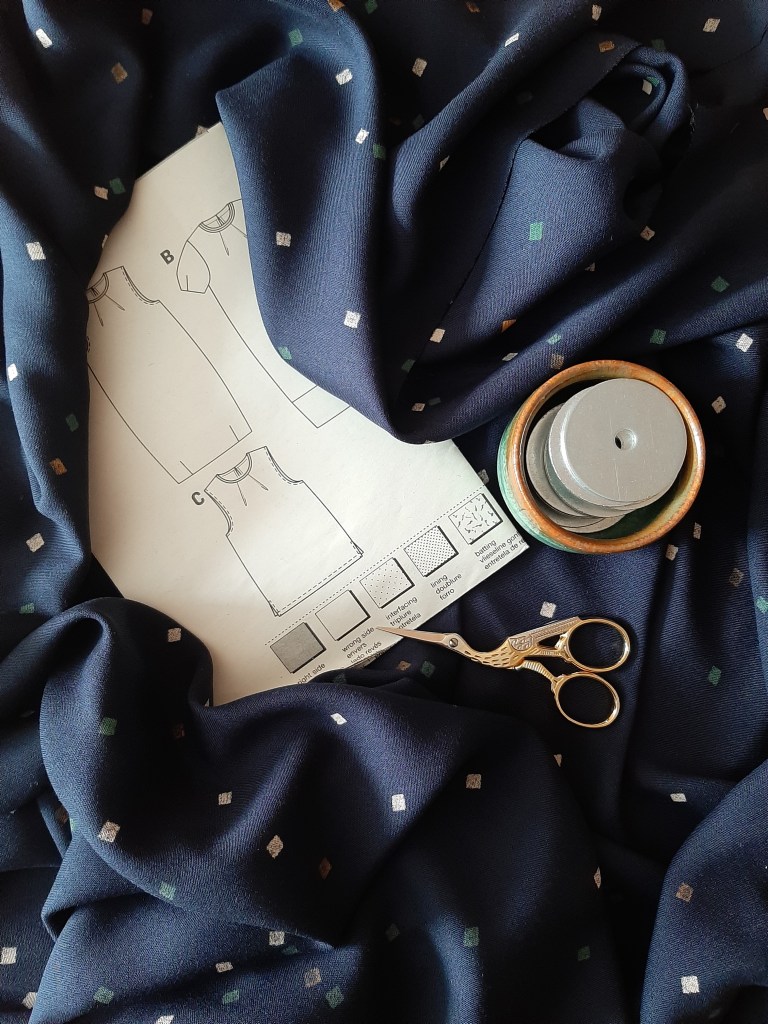
I wasn’t entirely sure this would make it onto the blog – not only due to the mind-altering nature of lockdown and its miriad distractions, but also because… well… what next? Nobody really knows, so how do we plan for it? How do we know what to make?
As it turns out, even when I’ve got a slight case of rabbit-in-the-headlights, I’m never completely immobile in the sewing department; my output has been borderline prolific of late. Not that I’ve managed to share that much of it – that really would be pushing the boat out.
This is partly the reason I won’t be joining in with the Make Nine Instagram challenge this year. Well OK, yes, I have never joined in with this challenge. There’s something about setting down plans in black and white that make me want to do anything but… Gently coaxing myself into making things I thought I was desperate to make leaves me cold. Better leave plans unsaid, and see what materialises in the moment. That’s my not-at-all catchy mantra.
While 2021 will be no ordinary year (as much as we want to boot 2020 into the stratosphere and start afresh, in the UK, at least, our covid baggage is still very much with us), I plan to carry on as usual with my uncharted sewing path. That’s not to say I don’t have certain parameters I’m working within: the ballpark, if you will.
The plan? To turn prolific into specific; I’m not going to stop sewing any time soon, but sewing with carefully considered purpose is going to be my jam. So, rather than a laborious list of everything I plan to sew this year (a list so nebulous and tricksy I wouldn’t wish it on you, dear reader), I will offer up a few of the guiding principles I’m working with to keep me happily making into 2022.
1. Strike a balance
This is a tough one, but something I’m keen to pursue. I’ve already been keeping a watchful eye on the makes I get the most wear from, so the road is beginning to look clearer, but this year I’m hoping to hone my ‘sewdar’ so that everything I make really counts.
How? William Morris‘s golden rule fits just right for this one: ‘Have nothing in your house that you do not know to be useful or believe to be beautiful.’ For clothing, that means stuff I find aesthetically pleasing and that I will wear. Oof. For the magpie eye that’s harder than you’d think…
2. Set boundaries
While it’s nice to think the world is your oyster, too many options can wreak havoc with your sewjo. There are so many things we could make. If we have time to make them, how do we stop ourselves freezing with indecision, overwhelmed by the possibilities?
If the tyranny of choice is something you struggle with, then maybe this will help: set yourself some personal boundaries or guidelines. Nothing uncomfortably rigid, nothing set in stone, just a guide to help you consider your options. The endless stream of novelty will never abate, so it’s up to you to categorise and prioritise what you will and will not take notice of. Remember: your attention is a valuable resource.
This year I’m giving pretty feminine prints the swerve (unless I’m using up my stash) and sticking to the styles I know I will wear. Maybe I will experiment further down the line, but for now I will be sharpening my teeth on tried and tested patterns, colours and cuts.
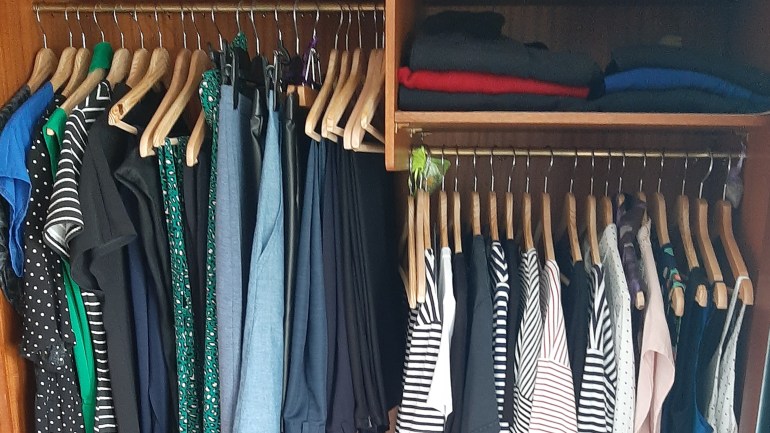
3. Take stock
Since late-2019 I’ve been combing through my wardrobe on a regular basis, taking stock of what I have and what I might need, what I wear and what languishes dormant. I won’t say unloved because I think that’s the trouble with homemade clothes – we love them but do we wear them?
Parting with the things we spent time making is hard. But in order to see what we actually need, and where our efforts would be best placed, it helps to look beyond our attachment.
I’ve found this easier and easier as time goes on; while sometimes it feels a bit killjoy, I have begun to recognise even before I start a project that it will probably join the forlorn brigade at the back of the ‘drobe.
4. Recognise enough
This is one I really do struggle with. If you’ve read any of my pieces on coatmaking you may already have guessed that sometimes, if I really like a garment, I find it hard to wean myself away from making countless versions. Coats are a particular weakness, largely because they do get a lot of use and they are fun to make. But there are other patterns I tend to turn to when I just want to sew something – Zadie, I’m looking at you – and at some point I have to draw the line. How many jumpsuits do I really want, let alone need?
Do I want to grapple with my wardrobe to find something? I don’t have an overwhelming amount of clothing and I want to keep it that way. That does spell a little trouble for a committed sewist like myself, as making clothes is both my passion and my day job. So how can I keep those fingers twitching and that foot pedal purring if I’m not banging out makes for myself at all hours?
5. Prioritise others
I don’t buy into the ‘selfish sewing’ and ‘selfless sewing’ idea. When I sew for myself, I’m not being selfish – it’s my hobby and it helps keep me on the level (seriously, do we hear about ‘selfish carpentry’, ‘selfish pottery’, ‘selfish painting’? I will be writing about this soon). Similarly, when I sew for others, I’m not being selfless – it’s my hobby and it helps keep me on the level. See where I’m going with this?
In the past I’ve had so many garments on my to do list that the idea of sewing for others (aside from my kids) just felt like something that would get in the way. Lately, though, that’s changed… Maybe it’s down to the pandemic, maybe it’s just my season of life and the fact I’ve reached near saturation point sewing for myself, but I feel increasingly drawn to creating things for people in my life.
This is such a nice stage to reach – being able to share my skills with others and spreading the benefits. Whereas once I felt rushed and harassed making gifts for other people, now it is a pleasure and one I can take my time over because, really, that third Zadie can wait…
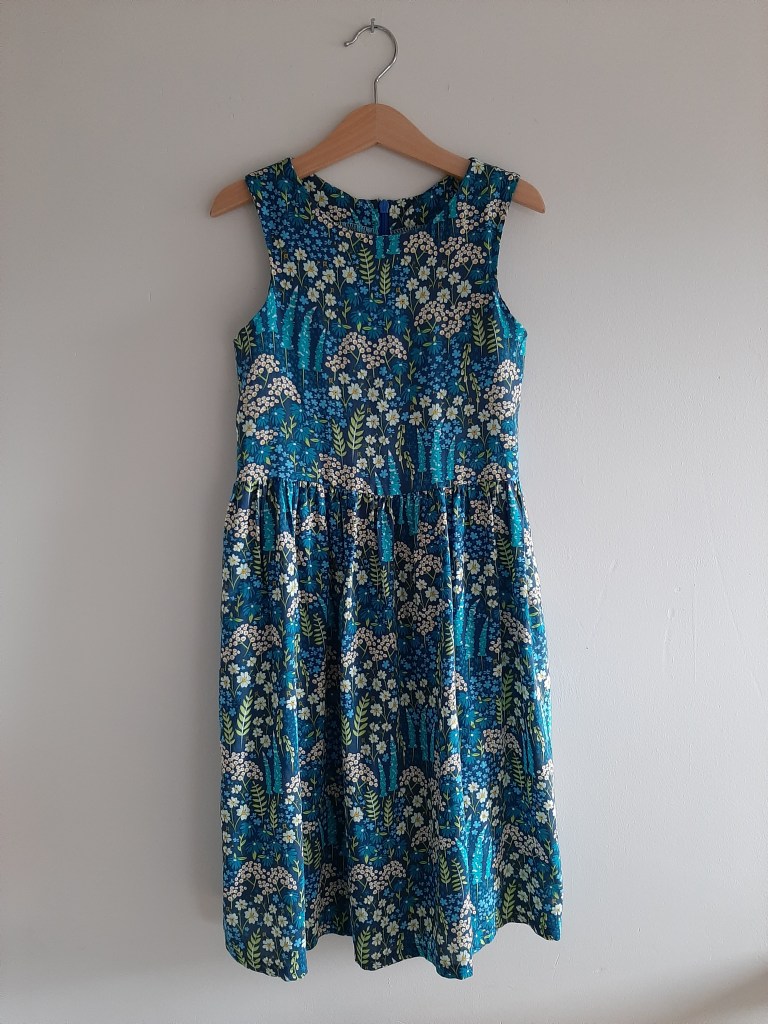
6. Cover the bases
That said, I will still be sewing for myself. Ha! Of course I will! I’m keen to cover all the sewing bases I can; one area I haven’t delved into much beyond pants is lingerie. At present I’m not in need of anything but when I am, I will be giving that a whirl.
As well as learning new garment techniques, I’m also keen to get all the basics covered. When my M&S jersey vests fall apart, I will be replacing them with versions made using this pattern from @sozoblog. Can’t guarantee that will be during 2021, but we shall see…
I’m enjoying the possibility of being semi-self-sufficient in the clothing department, replacing things as they fall apart, being able to create stuff for my kids as and when they need it. There’s something quite liberating about disentangling from the long wish list full of fancy new patterns and shiny things.
7. Remake and refashion
I’ve always been one to fiddle around with makes long after they were pronounced ‘done’. Knowing when to down tools is a skill crucial to many artforms. Alas for the painter that daubs the canvas beyond the magical ‘moment’ of completion. With sewing, the finish line is not quite so tragically imperceptible. Depending on the project, there is the potential to skip back and forth from the finishing line. In fact, the dance between do and done should be expected.
Sometimes, however, garments seem finished, but after a month or two they’re not being worn. I whip these out of the wardrobe and try and work out why. Hatching a plan to deconstruct and remake – whether it’s a small tweak or an entire refashion – is not only hugely satisfying, better for the environment and for your wallet, but also it is the best way to learn. You learn about your tastes and preferences and more about sewing than you ever will whipping up an endless stream of not-quite-right garments on the quest for ‘the one’.
I’ve already spent a huge chunk of 2020 and most of the first quarter of 2021 refashioning and tweaking garments in my wardrobe. There’s often a lot of unpicking and hand sewing involved, which is great if, like me, you like to have something to do while you’re watching a bit of telly.
8. Spectate
We are always being implored to get involved, but sometimes it pays to be part of the audience. In the past I’ve hurtled towards sewing challenges on Instagram without thinking too much about the consequences. I’ve made garments that, if I had my time again, I probably wouldn’t have otherwise made; they fitted in with a challenge and because it’s fun to join in, I ended up spending time working on something that turned out to be unloved.
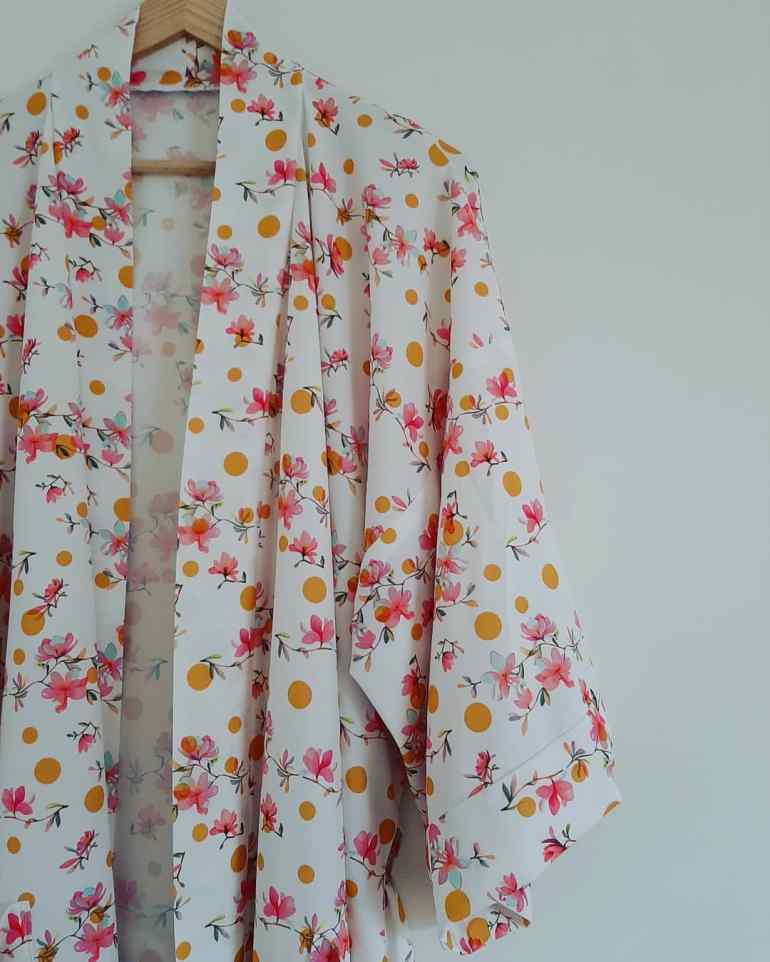
So this year I’m doing it differently. If a challenge fits in with my plans, then great. But if not, I will watch the parade and enjoy it without feeling obliged to get stuck in myself.
I’ve loved seeing all the Wear Happy Color posts on Instagram this year, but I’m not going to rush that blue top (see top pic) I happen to be making just because it’s blue week (in the past I would have done just that).
Similarly, the #frugalfrocks2021 challenge has been a really fun and inspiring way to get people to dig through their stash. But after a solid year of stashbusting I don’t have many large pieces of fabric left – and I don’t wear dresses enough to warrant making another right now. So I made a dressing gown instead – a nod to the challenge and its organisers without ending up with something I didn’t need.
9. Feather the nest
No, I’m not going to go all Martha Stewart on you. But I am going to spend more time this year making things for our home. I’ve already started on the blinds – one for my son’s room (which you’ll be able to see in issue 93 of Love Sewing), and now I need to follow suit with a pair for our bedroom and a trio for the living room.
We have enough cushion covers to furnish a small hotel so I will park that stash buster for the time being (OH BUT THEY ARE SO FUN AND EASY!!), but a cover for the sofa bed mattress is on the agenda. And, after setting fire to our oven gloves twice, the next pair will be homemade. Storage boxes and tubs made of fabric can look lovely so I have a few planned for a glass cabinet downstairs and some for the kids’ rooms. This sort of gubbins – c/f napkins, placemats, pot holders, etc. etc. – makes nice pressies too, so there can always be something in the pipeline.
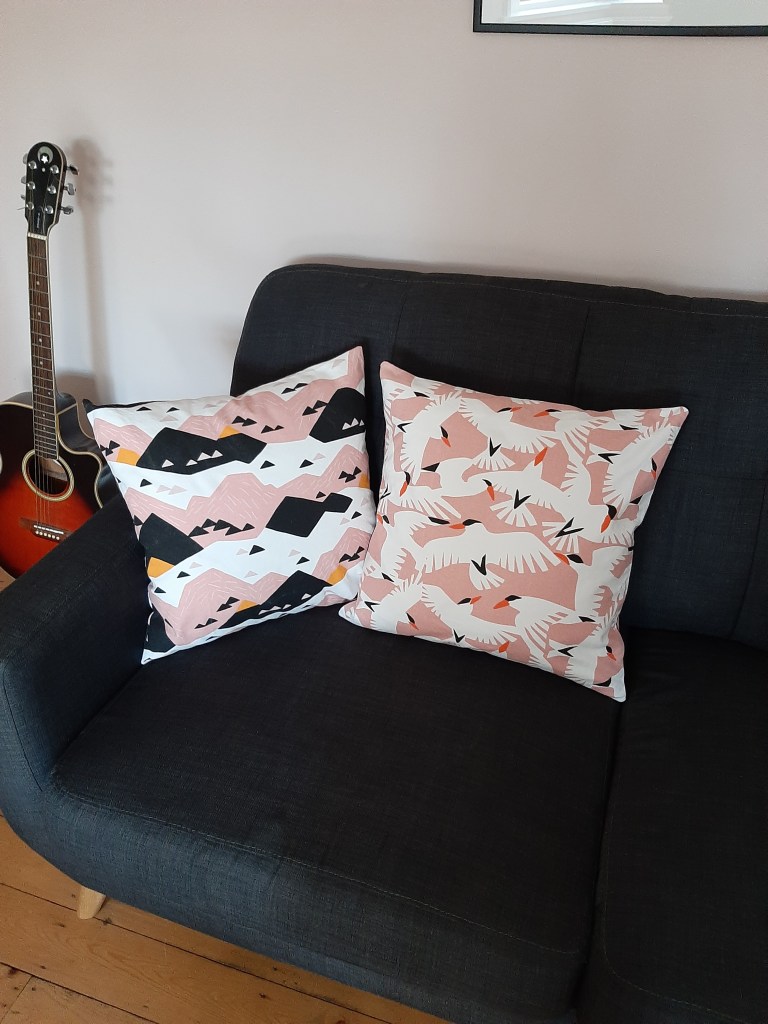
10. No names, no pack drill
Ultimately the plan is to be a little more mindful about what I make. To take away the pressure to ‘perform’ with pretty makes that hardly, if ever, get worn. To focus on what is necessary and of intrinsic value. That doesn’t mean I won’t be planning a few fancier items here and there – I’m here for the joy of creating too and a homage to the Vampire’s Wife is long overdue.
Maybe this year, if we emerge from restrictions over the summer, will be the year that special dress finally gets made. We shall see. I’m happy to be intentional but also to drift: no names, no pack drill.
How do you plan for the year ahead? Do you have a Make Nine or do you prefer to play it by ear? Does the way you sew or plan sewing change over time? Let me know in the comments – I’d love to hear from you!

Sewing is a hobby of mine, but I actually haven’t sewn anything in a long time. However, I have so many hobbies and crafts I want to make that it can be overwhelming. I don’t do any of the “challenges” but I do see things in the “creative” Facebook groups that I’m in which I want to make. I believe I can take your “10 Principles of Intentional Sewing” and apply it to my creative endeavors. This could be a way to focus because as you say – my attention is a valuable resource. Great post!
LikeLiked by 1 person
Thanks Betty! I agree – these ideas can translate to any creative activity. It’s a bit of a pick’n’mix – working out what works for us as and when we need it. I hope you are able to hone in on the activities that bring you the most joy this year x
LikeLiked by 1 person
Great read, always love to hear about the thought processes of other makers. I think I’ll be applying quite a few of your principles for intentional sewing and feathering the nest will be high up there, it’s something I’ve not for ages.
LikeLiked by 1 person
Thanks Miranda! I do love a good feather! I also love hearing about the creative process. And also how we manage all these clothes… I’d love to see inside every sewist’s wardrobe! xx
LikeLike
‘Twas a good read. I find myself in a similar place. I find the discipline of repairing or refashioning makes that aren’t getting worn a real challenge and I want to work on that going forward.
LikeLiked by 1 person
Thanks Lena – glad you enjoyed it! I think it must be a sign of the times so many of us find ourselves in this place now. Sometimes I really can’t face unpicking something that looks finished, but it is rewarding in the long run (sometimes they can’t be salvaged, but hey ho, all part of the process). Looking forward to seeing what you alter/refashion this year xx
LikeLike
I like to plan at times in order to purchase fabric and patterns in sales, but I hate the idea of rigid timeframes. Self-inflicted deadlines are a surefire way to kill my sewjo! I’m much happier flying by the seat of my pants. I really appreciate your thoughtful approach, and I look forward to seeing what you create this year, Ruth!
LikeLiked by 1 person
That is a really good point about sales – I never remember that and always buy on a whim. Thanks Theresa xx
LikeLike
I love making sewing plans probably as much as making the garments! I’m planning by season, a couple of month ahead, to purchase fabric on sale. Having said so, I have some leftover fabric pieces that I try to integrate in these plans, mainly because I don’t have a lot of storing space. And I love to sew for others! It allows me to get better in fitting on different body shapes and learn new things, without filling my wardrobe too much.
LikeLiked by 1 person
That’s such a good idea to plan ahead so you can make the most of sales. Great tip! And totally agree about sewing for others – all the sewing kicks without all the inventory!
LikeLiked by 1 person